Find out what is marketing automation and how it can help your business. It’s like having another data specialist into your marketing department, doing the hardest part of their work.
Is Marketing Automation what I think it is?

Collecting user information by CRMs and marketing automation tools is the first important part of a great marketing strategy. But it’s only the beginning of what should come next that automatically group customers, contact them and generated conversions on your behalf.
You might have these questions:
- How can you use user collected information to maximize campaigns return?
- Is the information I collect enough for my marketing efforts to be effective?
So, is it marketing automation a solution for your business? We don’t know that yet, but we know that marketing automation compensate for the lack of digital marketers you have in your marketing department. Thanks to such solutions, repetitive tasks are done automatically and other marketing activities are only challenged for improvements instead of doing them over and over again.
The purchase funnel for customers is different for every business and it also depends on each user profile. Features provided by a marketing cloud would take care of customer relationships at every stage of this purchase funnel.
So below we list the most effective ones and their benefits:
1.Customer profile intelligence

The center of any marketing strategy is data about your customers, or the target market you’re looking for.
Collecting data information and adding some intelligence to it is the basis for marketing success. Any marketing automation scenarios are based on such information about your customers.
In these days customers are multi-device users so emerging all these profiles to attach to same customer is a must for the marketing automation solution. The system collects information from desktop, mobile, tablet activity, add information from emailing and social media profiles.
The thing that connects those profile needs to be unique, so an email address or a unique ID will do the job. This is saved on the each of the device used. Returning users will automatically be recognized all over the places and get new information attached to their profile.
Individual engagement practices help improving the customer experience (read more on NGData.com).
The goal is to stop selling products and push promotions and start meeting customer expectations by delivering completely personalized shopping experiences.
2. Real-time segmentation for smart Automated Campaigns
With the basis on customer intelligence, a great segmentation tool will allow to easily select customers that match specific conditions from the entire database. Here is not only the profile attributes your users might have set, but also their activity and recency based on date and time.
So, customer intelligence collects customer data, and the segmentation tool is able to choose those you want to target with your campaign. Example of such segmentations:
- Viewed 3 products from Bags category with the value of over $100
- Started filling checkout information but did not finish the purchase
- People from London who Searched on your website for ties and clicked on one of the results
- Looking for umbrellas during a rainy period in New York.
Being able to create such segments is very important and allows for the most effective communication through newsletters, dynamic messages, ad retargeting or push notifications.
You can, therefore, send categorized newsletters to people who are in these segments, informing them about news, sales in that particular interest. A dynamic newsletter allows including placeholders inside the email content, such as “viewed products” or “best sellers”, to which appropriate products are added automatically.
3. Recovery of abandoned carts and checkouts
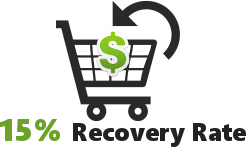
In about 70% of times customers add items to their shopping cart and does not finish purchase. This is when the cart recovery tools come to help.
It involves sending/showing a message through email, push notification or ads to the customer automatically, reminding them that they had left their cart behind. Encouraging users to complete purchase can be done through scarcity messages, discount vouchers or free delivery.
Using MARA you can recover about 15-25% of those lost carts.
4. Retarget bounced visitors
Up to 97% of your visitors don’t convert the first time they visit your shop. So how do you go back and try to persuade these users to come back and finish a purchase? In marketing terminology this is called retargeting and it’s quite popular for ecommerce businesses
There are a few options that you might be already using:
- Email retargeting
- Push notifications retargeting
- Ad retargeting (Facebook and Adwords)
A marketing automation service should be able to do those (or at least a part of them). The data is there, in the customer intelligence database, so it needs to be used smart.
5. Lead collectors
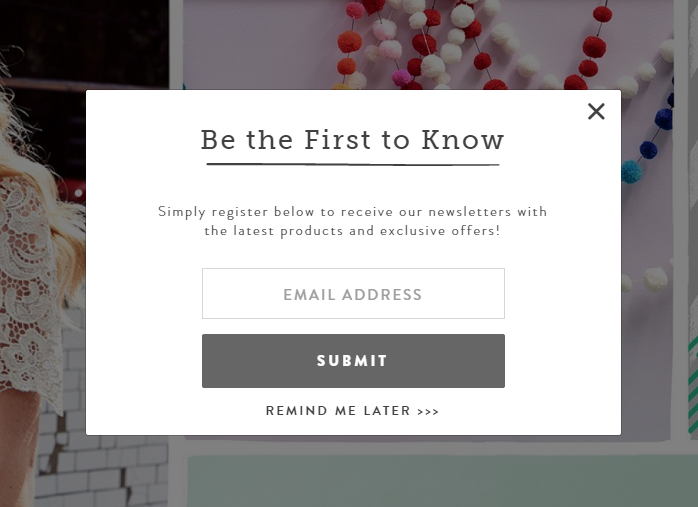
This might be before section 4, as you need to have their email or push notification permission before doing retargeting. Because the biggest part of your visitors do not convert, it’s recommended to focus on some smaller but important goals: get contact data so you can follow them back using retargeting.
MARA automation cloud creates lead collector to ask people about their email address or to allow for push notifications. This data is attached to user profile and you’re able (and have permission) to reach them with messages that will get them to buy at some point.
6. On site personalization
Site personalization was started a long time ago by Amazon (around year 2000) and was improved since then by a ton of other third party marketing solutions and retailers.
Any marketing automation solution is tracking user behaviour and is able to respond in real time to it, or at least, it should be. Some touch points when it can show messages to customers is your website (mobile or desktop version). This is called personalization and it comes in multiple formats: banners, widgets, site content, exit intent messages and so on.
Triggers represent how the marketing automation application takes the decision to display the message and can be one of the following:
- On page load
- When clicking on specific elements
- On the intent of leaving the site (exit-intent)
- When page scroll reaches a certain level
- After time spent on a page doing nothing.
Examples of usages of site personalization include: vouchers or free shipping given on exit intent, weather related messages, displaying messages to people about to leave checkout.
7. Product recommendations
Product recommendations are one of the smartest features that marketing automation systems provide to online retailers. Machine learning is capable of taking decisions on what products a user is interested in (based on some logic the marketer will decide).
Those recommendations can be embedded into emails, site and inside push notifications content. This technology is very accessible at this point and can decide results based on algorithms. Cross-sell and upsell are the most common examples used to increase the average order value.
With marketing automation systems, even small online stores can use it for cases like cart recovery emails (should include related products to the ones in the cart), follow-up emails after the purchase and so on.
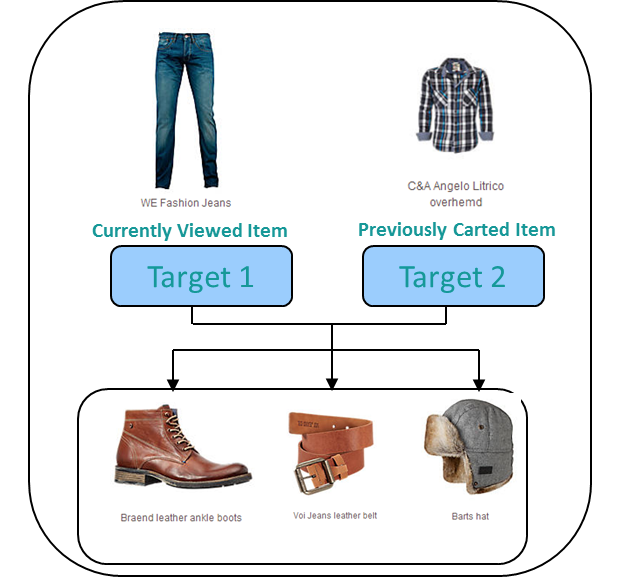
MARA provides a smart engine for product recommendations and is able to deliver over 20 algorithms by default. Similar to cart, what other users have bought, best products by conversion rate or most interesting items are some examples.
Cross-selling deals involve recommending products based on what they have already added to cart/purchased. This will either help the business increase the average order value or to add another order on that user. The most common example comes from fashion, so those that are interested in shoes can see bags and accessories to add them to a next purchase.
Upselling is the method of showing more expensive products to the user, with the idea of increasing order value.
8. Push notifications
Push notifications are a new method of getting in touch with your customers, through small messages displayed in the browser (either desktop or mobile).
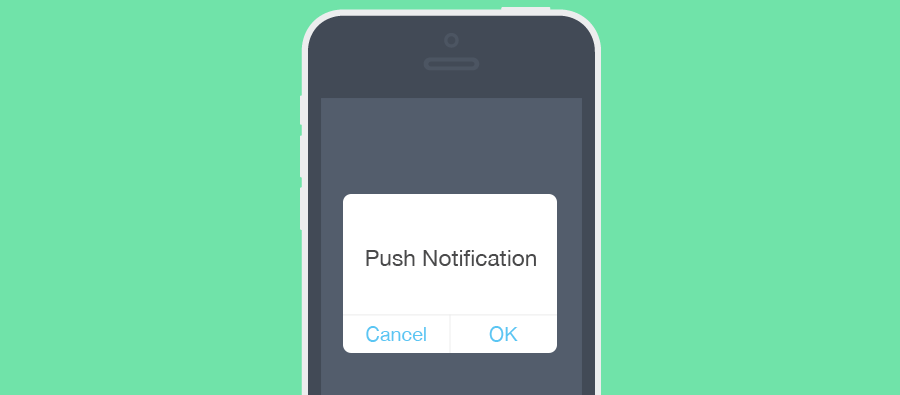
The notification is a simple message possible to send to a customer if they already subscribed. The permission is a must before you’re able to send a push notification to a customer.
You can see push notifications campaigns the same way you send email campaigns. Those can be sent to all customers, a segmented portion to them or based on their behaviour. Those based on user behaviour are called transactional push notifications and will be displayed to only one user.
9. Polls and surveys to gather more data
Information is the basis of great marketing decisions. In order to find answers to your questions sometimes automation systems can’t help. You need to find out what are the main problems to your customers, the best solutions for those problems, and the ideal ways to present the solutions to them.
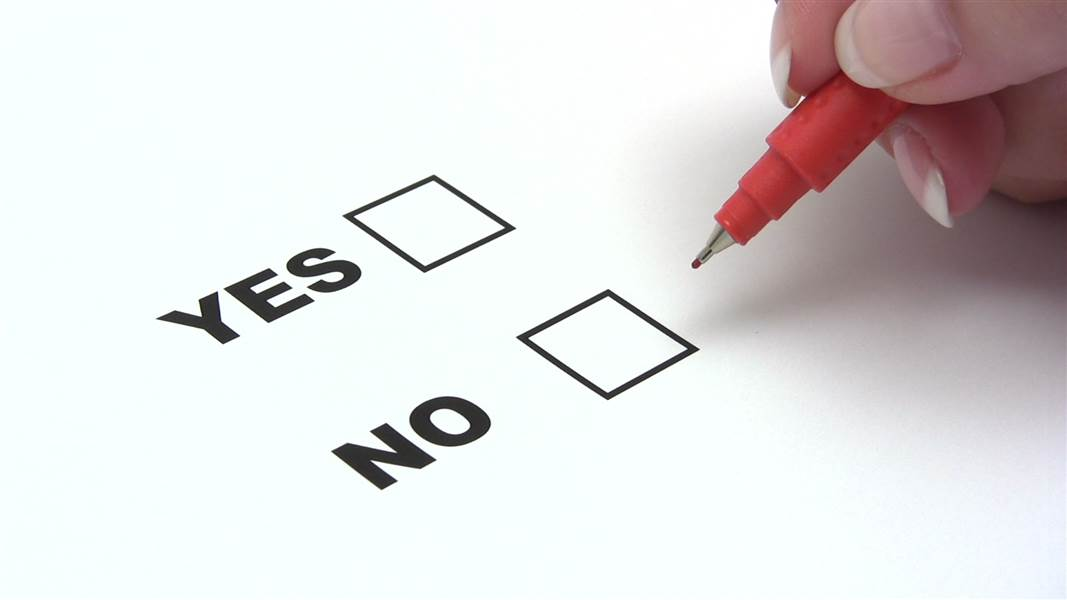
Those polls can be combined with interactions, so you display them at the right time using some great segmentation conditions on your website. Examples of questions:
- Was there anything about this checkout process that we should improve?
- What was your biggest fear or concern about purchasing from us?
- What information is missing or would make your decision to buy easier?
To read more questions to ask your customers, you can read more here.
10. A/B/X test everything
In a marketing automation solution, none of the above will work at their maximum if you don’t test your assumptions. Here comes the A/B testing feature that must be present into such solutions of marketing automations.
The A/B/X test allow marketers to compare the performance of two campaigns and choosing the better one to be sent to a wide audience. A campaign can be anything, like an email, a product recommendation design or a push notification.
This allows you to choose the most effective communication right away. Conducting such tests without a marketing automation system would be difficult to accomplish, especially when it comes to reporting the results on the variations. A/B tests allow you to establish the most effective communication with your customers.
Automate, refine, automate more
Marketing Automation Cloud solutions like MARA help you make more money from the same traffic. More money comes not only from increasing store sales, but also keeping valuable customers close to you so they come back to buy over time.
With such great features, creating personalized content, showing the right product recommendations along with sending the right message to the right customer at the right time will bring you more customers and make those sexy profits we were talking about in the title.